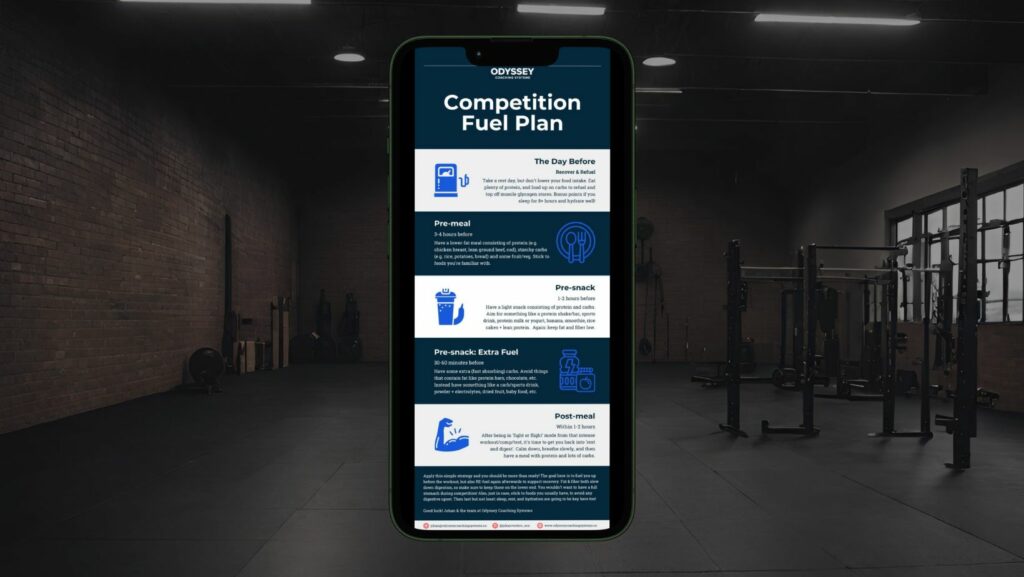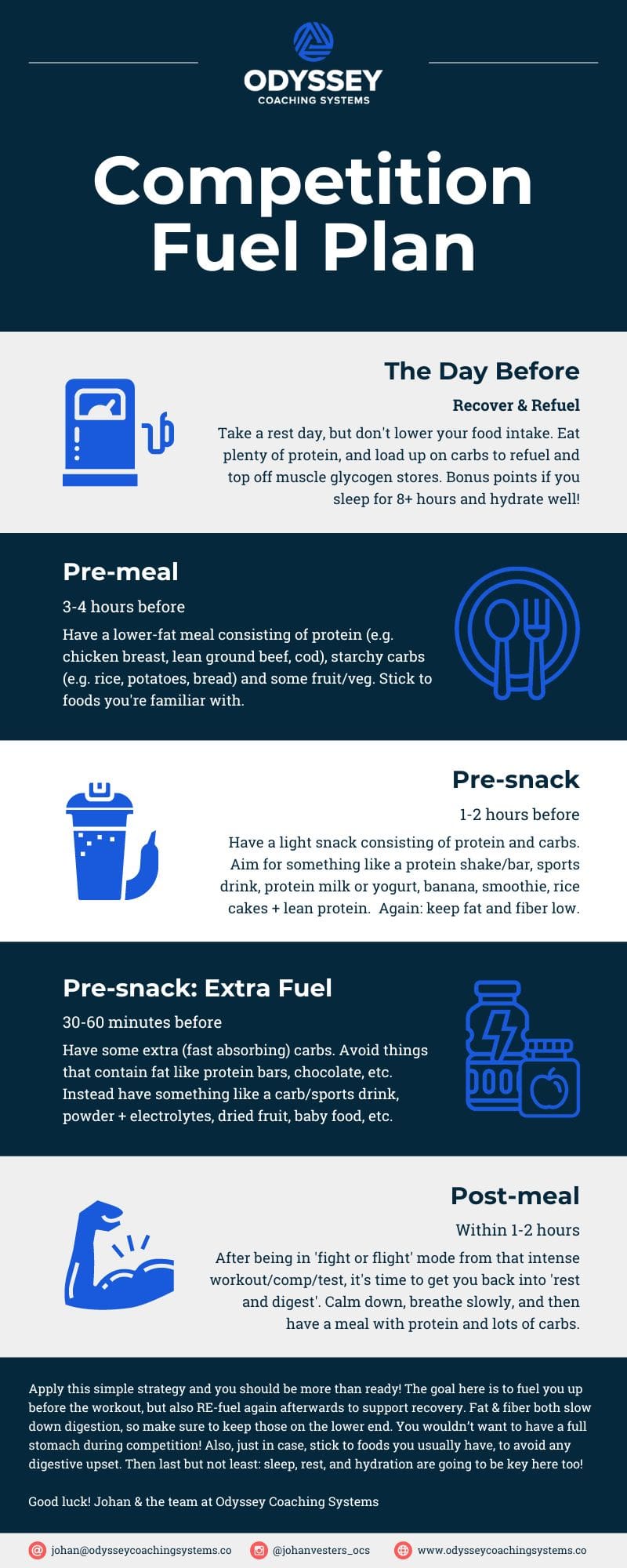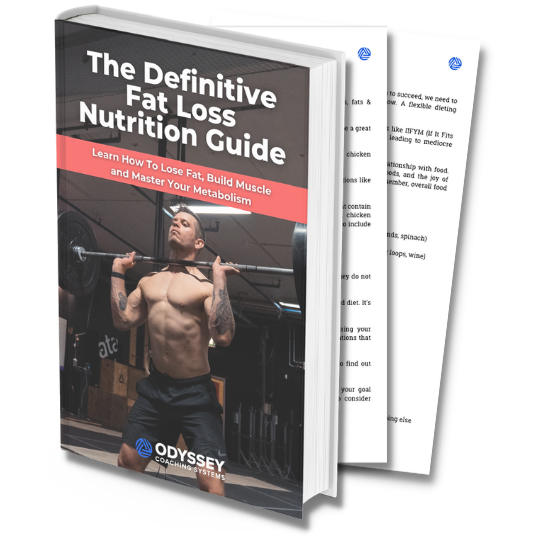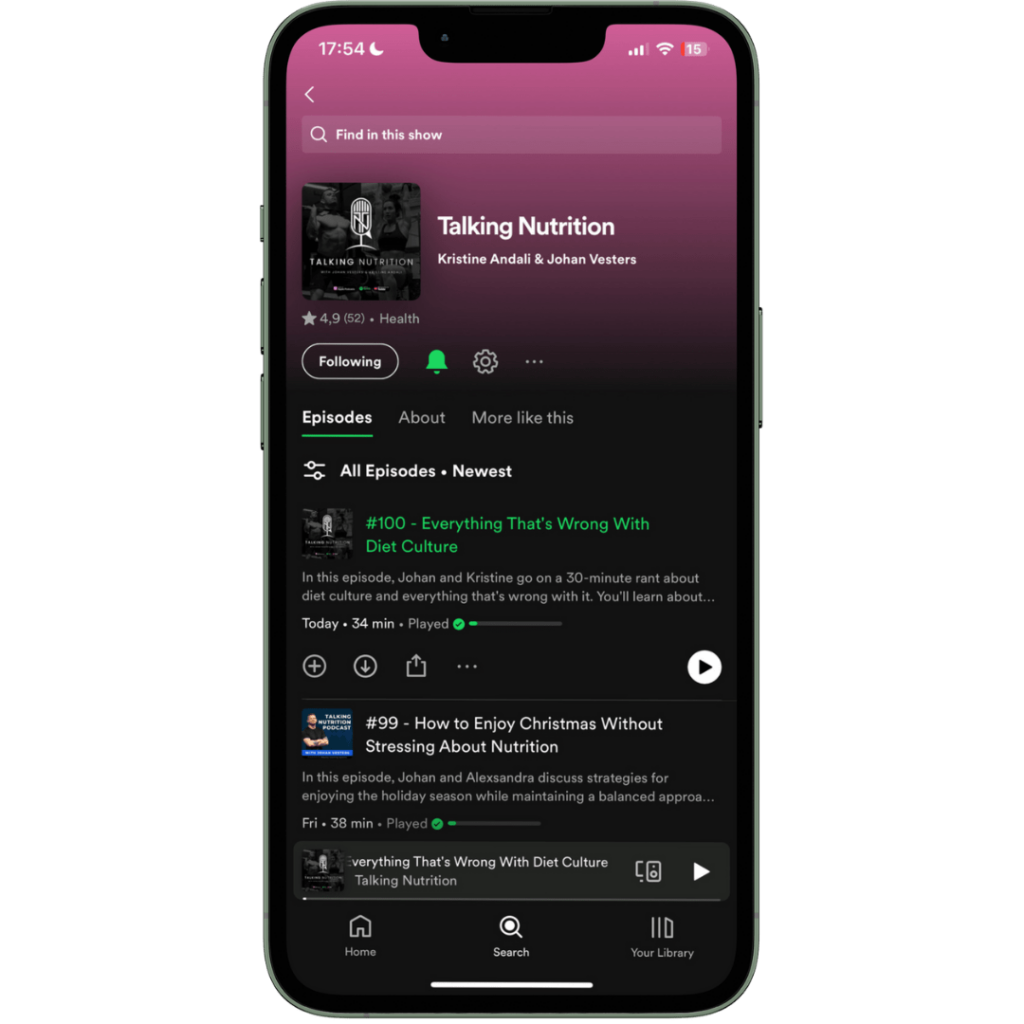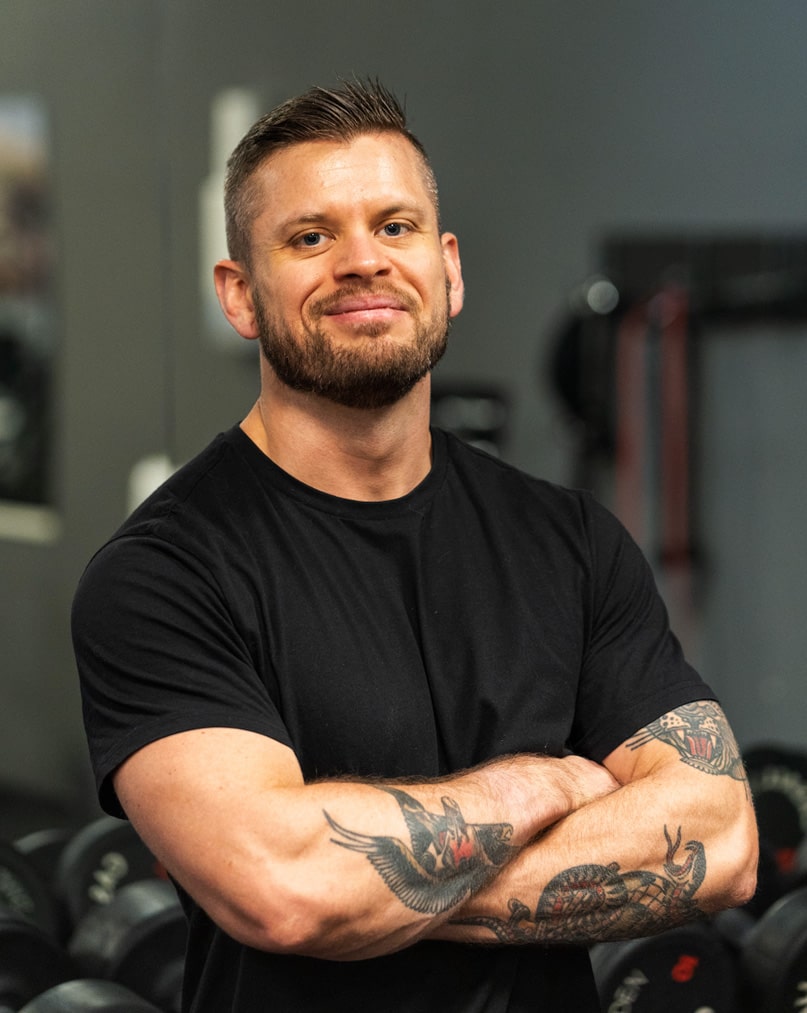The CrossFit Open is a season full of excitement, anxiety, highs, lows, victories, and hard lessons…
It’s the ultimate test. One that goes beyond who can go the hardest during the Open WODs.
It’s test of how well you have your nutrition and lifestyle in check, and of how willing you are to learn from your weaknesses and past failures.
It’s also just a good time.
When I caught the CrossFit bug back in 2013 – which eventually led to me becoming a CrossFit coach – I was immediately drawn to the community feeling.
And if anything, that community feeling… THAT is the best part of the Open for most people. Testing your fitness in a friendly competition, rooting for each other, hoping for everyone to do great at their Open WODs.
Unpopular truth… There’s a 99.9% chance you’re NOT going to the CrossFit Games anyway. That’s not to say you shouldn’t do your best, you absolutely should. But view the CrossFit Open is the ultimate test to see where YOU are currently at compared to the old-YOU.
Don’t beat yourself up when you mess up. You can either try again, or use your failures as a lesson about what to work most on AFTER the Open.
I remember exactly what my coach at the time told me when I got frustrated during one of the WODs: “Just have fun”.
Just have fun, that’s EXACTLY what the Open is about.
Yes to going hard.
Yes to doing your absolute best.
Yes to bringing up that inner competitor.
And YES to just having a good time, putting in good work, testing your true character, learning from your weaknesses, and cheering on your friends and every other participant at your gym.
You’re about to learn the exact strategies pro athletes use to optimize their performance in any sport.
However, keep in mind that to really be successful, you need to think beyond just workouts and food.
What’ll need extra attention in your upcoming post and pre-seasons? Will you have to double down on heavy weights? Olympic weightlifting? Gymnastics? Endurance?
More importantly; where’s your character at? How much inner work do you still have to do? This is a big one most people don’t want to do. Hack: this means you can set yourself apart already by doing more self-reflection.
Lastly – which is why you’re here – How well did you take care of your nutrition and lifestyle?
Follow this ‘Fuel Plan’, and you’ll perform better, recover better, FEEL better, lower risk of injury, and optimize your chances to make this year’s CrossFit Open your best season yet!
- Before we jump in, remember that the Open is only a very short, 3-week season. This Fuel Plan will help you get the most of your WODs. But if you really want to take things to the next level you better do your best during the other 49 weeks of the year too. That said, if you want to keep learning after this, I’d love to send you my all-inclusive nutrition e-book for FREE. You can grab it here.
Now, enjoy the article, and remember: #NeverStopGrowing!
Table of Contents
Mistakes to Avoid During the CrossFit Open
Let’s get clear on what the goal is during this 3-week season.
Performance.
And although you already know this, there’s a good chance you also want to ‘look the part’, or be slightly lighter so you can do better at the body weight movements. Right?
I feel you, you see those pro athletes walk around with popping 12-packs, and you kinda want the same. And sure, being lighter does help with your body weight movements.
However, you know what requires the exact opposite of performance?
Fat loss.
Want to know what we’re not going to rush last-minute as you’re getting ready to perform at your best?
Fat loss.
So, do yourself a favor and get that idea out of your head for now. If you want to plan for a fat loss phase, then we’ll do that after The CrossFit Open. Different goals (fat loss, muscle gain, performance, health) require different nutrition protocols.
I’m sharing this with you because I’ve seen this happen all too foten. People try to rush fat loss as little as 1-2 weeks before the first Open WOD just to lose a tiny bit of weight. This is then often followed by frustration, low energy, and suboptimal performance.
Another BIG no-go is water-cutting.
Since you’re a CrossFitter, I’m going to assume you’re familiar with weight-based sports like Olympic Weightlifting or Martial Arts. That said, you may know about water-cutting – the practice of losing weight fast by dehydrating the body. (If you don’t, cool, no need to dive into that now.)
All this will do is make you feel miserable, deprive your body from the fuel it needs (since cutting carbs is often part of the process), ruin your performance, and increase risk of injury.
You may end up lighter, sure. But the sacrifice ain’t worth it.
That said, let’s dive into how to properly fuel your body.
Promise me to keep reading all the way through, because if you apply what you’ll learn below, you will set yourself apart from most others (who don’t take fuel and recovery as serious as their performance).

Success Leaves Clues (part 1) - Coca Cola and Snickers?!
Hershey’s Syrup, Snickers, Coca Cola, and thick Gatorade slushes. Fuel of champions?
Actually, yes. Hear me out…
I remember watching a “full day of eating” video of Rich Froning – four-time “Fittest Man on Earth” – and watching him put Hershey’s syrup in his protein shake.
Years later Matt Fraser – five-time “Fittest Man on Earth” after Rich – went on a podcast and talked about how he contacted an expert who works with triathletes to learn how to optimize his performance and recovery. The answer? Snickers and Coca Cola right after a workout, and lots of Gatorade powder in just a little water.
Insane, or genius? We’ll let over a decade of gold medals speak to that…
You see, CrossFit is a highly ‘glycolytic’ sport. Because of its high intensity, your body runs on glucose (sugar) as its fuel. Guess where you get that glucose from? Carbs!
Carbs are broken down into simple sugars, which can then be used for direct energy, or stored in your muscles – as well as some in the liver – as glycogen.
And that muscle glycogen is what mostly fuels your workouts.
So what’s so ‘special’ about Hershey’s syrup, Coca Cola, and Snickers? Nothing really, it’s just a way to quickly get a bunch of energy in.
Because these products are very energy-dense and high in simple sugars, it doesn’t take long for those sugars to end up in the blood stream.
After exercise, depending on how intense and long the workout was, your muscle glycogen stores are at least somewhat depleted.
At this moment, your body is also most ‘insulin sensitive’. This means that your muscle cells respond better to insulin and can take up glucose better.
And that’s the whole point of the former champions’ strategy, getting sugar back into the muscle cells as soon as possible.
(By the way, the same goes for sports drinks and gels, and carb powders like Highly Branched Cyclic Dextrin. It’s all about getting simple, easily-absorbed sugars into the bloodstream to quickly refuel and replenish.)
Another bonus of getting lots of carbs post-workout, is a spike insulin, which ‘blunts’ the stress hormone Cortisol. This can help your body return to what’s called the ‘rest and digest’ state, which is where you want to be to recover.
Success Leaves Clues (part 2) - Understanding the Difference...
Now before we get all passionate here – because “Why is a nutrition coach talking about the P-word (processed foods)?!”
No, we will not prioritize processed foods over real foods at ANY stage.
(Sorry, don’t run to the store to get Coca Cola and Snickers just yet).
However, there’s an important lesson to be learned here…
During my years as a CrossFit coach I saw more people UNDER-fuel than actually eat enough for their high-demanding sport.
The same thing goes for most CrossFitters who join OCS these days. They show up with nagging little injuries, low energy, trouble sleeping, often have gut issues, hair loss, low sex hormones… Some of our girls even showed up without a menstrual cycle.
And we fix all of that.
How?
By eating ENOUGH (plus things like stress management).
By giving their body the calories it needs to support their high-intensity sport of choice. By feeding it the carbs it needs to FUEL and recover. By eating the healthy fats required for hormonal health. By adding more sleep, more rest days, more water, more single-ingredient and nutritious whole foods…
And yes, by sometimes adding some more processed foods too.
Because getting them up to their maintenance calories is a priority. Getting stress down, and fuel into their system, is a priority.
And I much rather see them achieve that ASAP, and then fine-tuning their 80/20 ratio of whole-vs-processed foods, than freaking out over some junk food. Especially when we’re this close to the Open.
Going back to Rich and Matt, please also understand that these dudes were literally the best of the best for years.
They often trained twice a day, and burned so many calories that it becomes hard to get all of that from real foods. Especially if a meal is consumed in between workouts, you’d want this to be something light and relatively low in fiber and fats.
Understand too the difference between pro athletes and everyday people like you and me. People who have work, school, kids to take care of, lots of everyday stress, and are often running on too much caffeine and too little sleep…
Not just that, you also don’t need Hershey’s and Snickers to refuel and replenish your muscle glycogen stores. This is a strategy used in between multiple workouts, like they do at the CrossFit Games.
Muscle glycogen can also take up to a full day to replenish, which means that we’ll simply focus on fuelling throughout the day.
Because that’s really the main take away here. To make sure you get enough calories in.
CrossFit Open Nutrition Essentials
There’s a difference between eating for performance and eating for health.
Strictly eating for performance does NOT involve looking as shredded as possible, or eating the highest quality foods possible. It’s about getting as many calories in as possible, mostly from carbs, without potential digestive issues or weight gain hindering performance.
Eating for health looks much different. This is where you’d go with a more balanced carb-fat ratio, focus heavily on whole foods, healthy fats, fiber, micronutrients, and not pushing calories as high as possible.
I believe for most people, that it’s likely best to go with a middle ground approach and take the most important parts of each to optimize your CrossFit Open performance.
Below you’ll learn about the fundamentals anyone needs, regardless of their fitness level and experience.
Eat ENOUGH calories – Remember, this isn’t fat loss season. If you wanted fat loss, that should’ve been taken care of already. Right now it’s time to perform! Your number one priority is to be at maintenance, where you get enough calories to support your body, health, hormones, and lifestyle
If you want to track and calculate your maintenance calories, you can use our free TDEE Calculator to get an estimate. Or you can DM me “CF Macros” here, and I’ll personally help you figure out your macro targets.
Eat plenty of each macronutrient – This is NOT the time to fall for fad diets like Keto, Whole 30, Weight Watchers, Paleo, the Zone Diet, or similar. You want to get lots of proteins, starchy carbs, healthy fats, colorful fruits and vegetables (5+ servings per day), and yes you’re even free to include processed foods in moderation.
Get your 7-8 hours of sleep – Not food related, but equally important! A lack of zzz’s can impact your performance, mindset, recovery, overall desire to put in effort, and more… Sleep is also when you recover! If you can sacrifice an hour of Netflix and scrolling social media for more sleep, then I say go for it!
Don’t eat less on rest days – Remember that it can take up to a day to replenish your muscle glycogen stores. That means that even if you don’t train, you want to get enough carbs in.
Only go HARD during the actual Open WODs – The non-Open WODs during The Open season are where you keep moving but keep yourself from going 100%. Unless it’s the actual Open WOD of course, then it’s GO-time! The rest of the week, pace yourself, practice important techniques, and get familiar with the weights you’ll be lifting.
Hydrate! – Drink lots of water, about 35ml per kg of body weight, with an additional 0.5 – 1L per hour of training, around your training. Drinking water a basic, simple one. But that’s also why it’s so easy NOT to do it. Again, this is important for performance, reducing injury risk, and more.
Basic supplementation – Not essential, though there is a time and place for some targeted supplements. Without getting in too much detail here, consider including Whey Isolate to cover your protein intake more easily. For improved performance, consider Creatine (taken daily, starting long before the Open begins), caffeine (about 30min before the WOD), and maybe Beta Alanine. Personally I’d also go with a Highly Branched Cyclic Dextrin around the same time, or even sip on it during longer workouts. Lastly, if you’re a big sweater, consider adding some electrolytes to your water.
*Please know that no blog, podcast, or social media post should – as much as it happens way too often – be taken as gospel when it comes to supplements. If you want to get into supplementation, work with a professional, do your own research (Examine.com is great for that), and consult with your primary care physician. This section, as well as everything else on our website, is for entertainment and educational purposes only.
Now that you’re familiar with your daily essentials, let’s break them down into individual meals and snacks.
Your CrossFit Open Fuel Plan
Simply click the image below to download the PDF version.
Hard Work Pays Off - During, but Especially AFTER the CrossFit Open
Hard work pays off, but the REAL hard work isn’t what you think it is.
Absolutely, you should go balls-to-the-wall and do your absolute best during the Open WODs in order to beat you-from-last-year. Hard work includes going hard during the workouts.
The real hard work is everything you do other than training.
It’s taking care of the boring stuff like sleep, nutrition, stress management, and recovery that sets the best apart.
It’s the balance between pushing your limits mentally and physically, and then recharging enough to become stronger, bigger, faster, and more resilient to stress.
It’s the hard work you don’t get to see because it happens behind the scenes.
The hours of massages, stretching, rolling, quality sleep, resting, parasympathetic activities, DIALLED in nutrition and some targeted supplementation…
Going back to Matt Fraser. He even had a mattress company deliver the same mattress he uses at home to his hotels. Just so he could get his usual quality sleep in during the CrossFit Games.
With all that said, you know what to do.
Nothing we’ve discussed today is very special. There’s no hacks or shortcuts. It’s all basic stuff, lots of which you already knew you should be doing consistently.
And that’s the reality of it.
There’s work to be done.
Work that’s never ‘finished’.
Work that comes with new challenges every time you reach the next level.
Work that, if you want to beat the old-you, simply needs doing.
Now, it’s time to go to work.
Good luck this year.
Thank you for reading. If you loved this one, please pay it forward by sending it to a friend who’s joining you in what for many is one of the most fun couple of weeks of the year in CrossFit.
Let me know how it goes!


